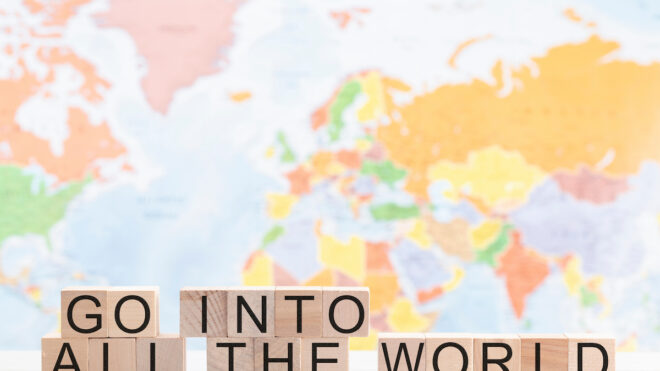I was young in the early Sixties, when the cultural rivalry between Los Angeles and San Francisco was strong and active. Jack Smith, for Los Angeles, and Herb Caen, for San Francisco, used to feud regularly in their newspaper columns and entertain the public with the North-South rivalry. Los Angeles, since about the time of World War I, had been the larger city, but San Francisco maintained its distinct culture and way of life. And at that time, they dismissed the growing city of San Jose, and basically everything south of Stanford University, as sort of a northern outlier of the barbaric Southern California lifestyle. [This is before the term “Silicon Valley” came into common use.]
Because San Francisco had been, from the Gold Rush to World War I, the larger city, it had the headquarters of the banks, and continued to have a more imposing skyline [and still does]. It had jazz clubs and coffee houses. And the Bay Area had Berkeley and Stanford. Los Angeles had the savings and loans, institutions which were in those days much more distinct from banks than they are today; their posh headquarters lined Wilshire Boulevard. Pasadena had Cal Tech, an institution, if anything, more prestigious than Stanford in the scientific world, and Jet Propulsion Laboratory. Los Angeles had Hollywood, and had, because of this, attracted European writers from Aldous Huxley to Thomas Mann, giving the lie to the claim that L.A. was a land without culture; but there was the world of Hollywood and then there was the rest of L.A., which had a much more conservative culture and viewed Hollywood as sort of a foreign community somehow imbedded in Metropolitan Los Angeles. Southern California also had a more advanced beach culture; a San Franciscan named O’Neill devised the wetsuit in order to enable the North Coast to keep up.
The early Sixties were the time of the brief flowering of two different schools of ‘surf music’: the instrumental one, pioneered by such as Dick Dale, who was born as Richard Monsour and was Middle Eastern on his father’s side – an influence which you can hear in his music. But a lot of it was an adaptation of schools of instrumental rock which predated surf instrumentals, and were often incorporated into it; the Ventures from Seattle, and Duane Eddy from Phoenix, among others.
The other school, the vocal school, was pioneered by the Beach Boys, who mixed the influences of Chuck Berry and Phil Spector with the choral stylings of the pre-rock-era Four Freshmen, creating an interesting mix. Jan and Dean, who were already recording, were soon incorporated into that particular school.
[It is interesting, now that I think about it, that San Diego County had an equally active surfing culture but produced no notable surf bands of either school that I know of.]
I can’t attach music to this blog, but I challenge the reader to download Dick Dale’s iconic “Misirlou” and then download San Franciscan Vince Guaraldi’s version of the same song, which was released virtually simultaneously with Dale’s. If that doesn’t give you an idea of the North-South cultural contrast of the Kennedy era, nothing will. [In case you wondered who Vince Guaraldi is, he had several hits such as “Cast Your Fate to the Wind” but his enduring fame for us today dates from his work on the Charlie Brown Christmas Special; tunes from the soundtrack have become part of our holidays.]
But now the glory seems to have faded. Joel Kotkin has written two columns; one on how San Francisco has reclaimed political dominance, and another trying to explain why Southern California has been relatively weak in high tech compared to the Bay Area. Ouch. I am a native of Los Angeles and Orange Counties, and there is something to me that hurts about the Bay Area, with half the population, grabbing dominance. And, in the other direction, the Sun Belt, of which Southern California was once the archetype, seems now to reach its west end at the Colorado River, leaving the Southland sort of in a limbo belonging to neither the West Coast nor the Sunbelt. It hurts.
Kotkin tells us, and I agree with him, that the tipping point was the Peace Dividend at the end of the Cold War, around 1990. Bases were shut down, the El Toro and Tustin air bases became political footballs, and aerospace spending was slashed. A large number of aerospace workers fled the state. Taggers were everywhere. The riots of 1992 eclipsed those of 1965 in size. In 1988, Bush Senior carried the state of California; in 1992, he did not even try to contest it, nor has it been contested by any Republican presidential candidate since, except for fundraising. [There is a long list of other states that Bush Senior carried in 1988, that have never given their electoral votes to a Republican since: Michigan, Illinois, Pennsylvania, Maryland, Delaware, New Jersey, Connecticut, Vermont, and Maine. A rather impressive list.] Contrary to what we are often told now, the recession of 1990 was not a local phenomenon; Clinton won in 1992 partly on the slogan “It’s the economy, stupid.”
In the last half of the ‘90s, Southern California roared back partly under the influence of the entertainment industry and resurging technology, partly because of a national boom in the Clinton-Gingrich era [1995-99] which was so strong that people who were unemployable before that time, and have been since, were employed; the unemployment rate reached its lowest in years. And the tech crash of 2000 actually hit the Bay Area much harder than the Southland. Conservatives based in the Washington D.C. and New York City think tanks had to posture that this boom was an extension of the Reagan era boom in the 1980s; so they began to dismiss the recession of 1990 as a mere blip on the screen, so that they could speak of the uninterrupted boom of 1983-2000 or even 1983-2007. As a Southern Californian who had been getting out of real estate at that time [just in time!], I was infuriated. I think at that time I began to lose my loyalty to the Republican Party and to the conservative movement.
But it was Reagan’s California that vanished in the crash of 1990, never to be seen again. While conservative ideas still flourish inland and in the Fishhook, the coastline of Orange and San Diego Counties, the idea that a candidate like Ronald Reagan and a Kitchen Cabinet of major donors and sponsors could ever emerge from the Los Angeles Basin again seems as remote as the Basin being covered by polar ice caps. The conservative movement is dominated by think tanks in New York City and Washington D.C., a part of the country that Barry Goldwater once fancied sawing off!



